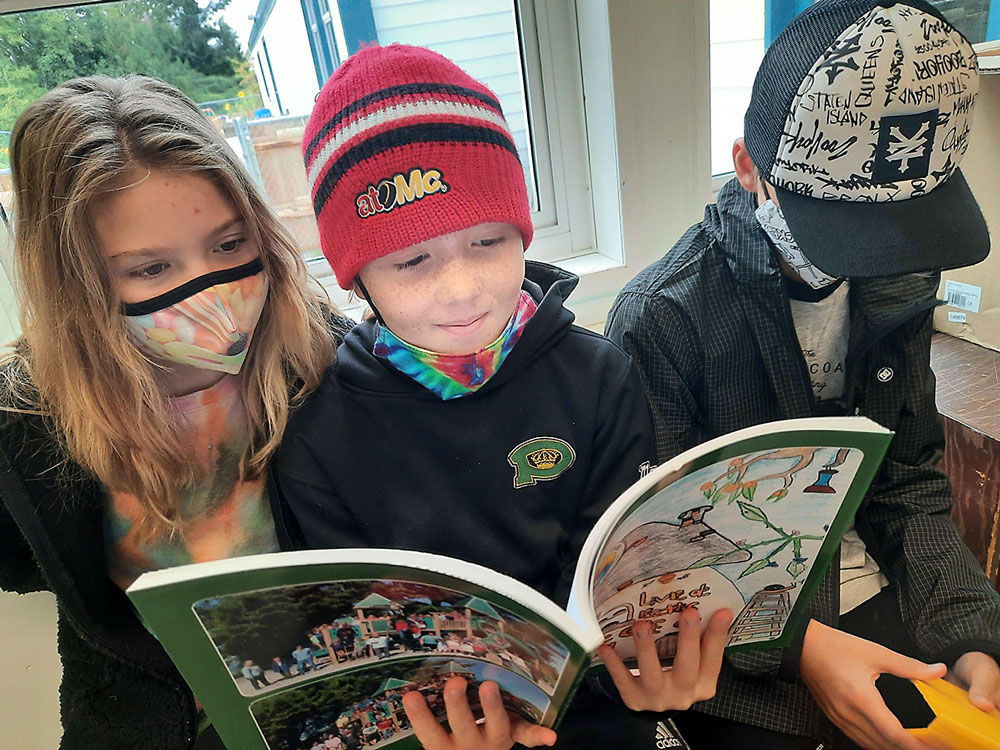The process of getting your book from concept to final product includes decisions you will need to make. Most are easily addressed by your book designer or graphic artist, but your involvement is equally important; a little preparation always helps, too.
1. What physical size works best for your book?
The most common size, called ‘trade paper’, is 6” by 9”. This is slightly larger than a standard letter-sized page folded in half and will help you stand out on the shelf. Both sizes work great for novels and there should be little difference in the cost of printing and binding.
Alternately, you may want to consider a larger format. For example, if you have many photos or other graphics, a full-letter format can work great. A number of the books we’ve produced have been at this size including family histories, cookbooks, a student planner for Brooks High School.


Smaller books can work great for children’s stories. For example, the series of children’s book we published for the preschool at the Tla’amin. All locally written and illustrated, these have been reprinted several times.

2. Choosing colour or black and white can make a significant difference in the cost of printing.
That said, sometimes colour art and photos are the best or only way to make the publication work. If cost is a concern, one thing we can do is slot all the colour pages together in one section, leaving the balance of the book black and white.
But colour is not necessarily critical, especially for old photographs. Indeed, greyscale (i.e. what people usually call ‘black & white’) can deliver a rich and detailed image. I recall poring over some of the photos of the building of cement ships in World War II in ‘The Hulks’ and being amazed at the quality we were able to pull out of those images.
3. Do you need an ISBN (International Standard Book Number)?
This one is easy: yes, and no. If you are publishing a book that will only be distributed directly to family, friends and others, then the ISBN is pretty much irrelevant. However, if you plan to sell your book at any sort of retailer, they will want the number to track their inventory and sales.
The ISBN is a 13-digit number and is provided by ISBN Canada, a government agency connected to Library & Archives Canada who also provide Cataloguing In Publication (CIP) information to publishers. The CIP information offers standardized bibliographic descriptions for libraries and archives. As a self-publisher, only the ISBN is available.
The ISBN will be converted to a barcode that can be scanned. This barcode will be created by your graphic designer.
4. How will you price your book?
The first step is to evaluate your costs, taking into account the profit margin for retailers to want to carry your book. Your costs will include two main items: the book design, and the cost of printing/binding. There are multiple factors to consider, but your designer should be able to explain all the elements.
Your cover price is important, of course, but the retailer needs to make a profit margin to make it worth their while. In past years, pre-Amazon, the standard cost to the retailer was 40% off the cover price. Today, that is still used as a guideline but it’s not automatic as in the past. You do need to calculate how much you need to make selling worthwhile so take time with your calculations.
5. How will you get your book into people’s hands?
Marketing is a crucial part of your success and much has been written on the subject. We’ll discuss marketing in a future post, but for now, think about where you will sell the book: in physical form at local retailers, or online either through your own website or via a seller like Amazon? Digital publications require significantly different specifications and preparation, but more on that another day.
If you will sell physical copies, who will approach the retailer or organization you wish to sell to? How much will you need to charge to make it profitable for both of you? How will they restock and pay you? Historically, books have tended to be on consignment with retailers. That is, what doesn’t sell comes back to you with no compensation. This is a conversation to have with the retailer who might be willing to buy them outright if the discount is steep enough, but that’s not a guarantee.
Making your book a success whether financially or for your own satisfaction, deserves good planning at your end, and from your book designer.
